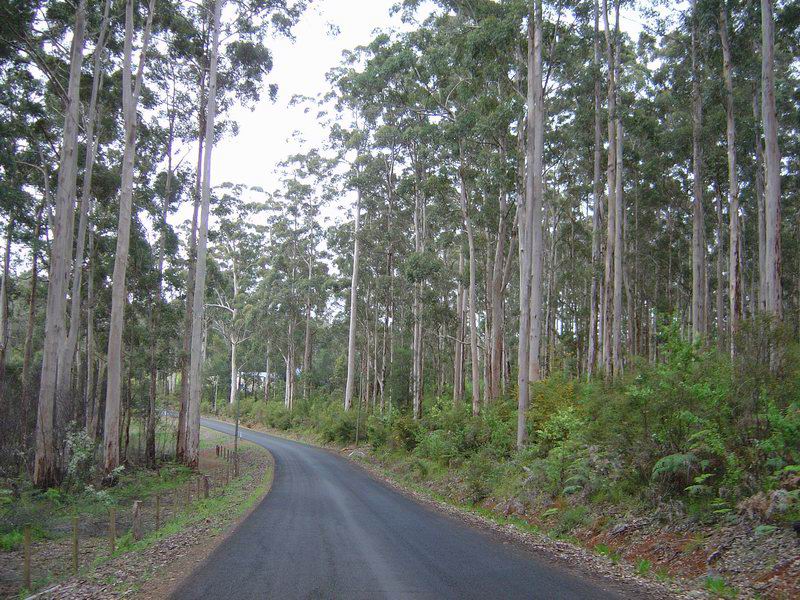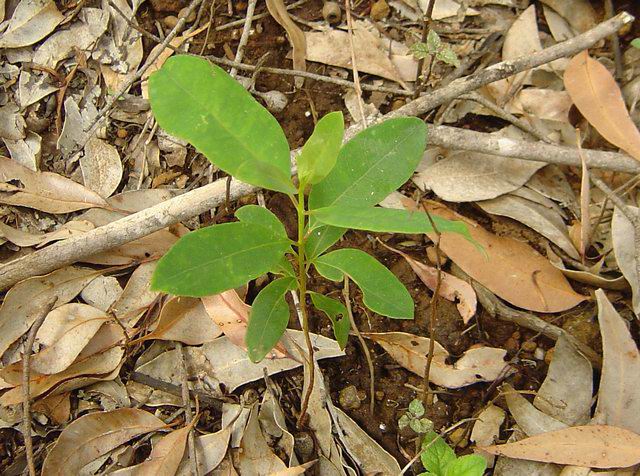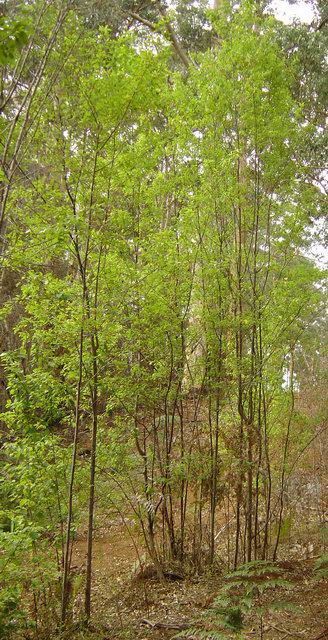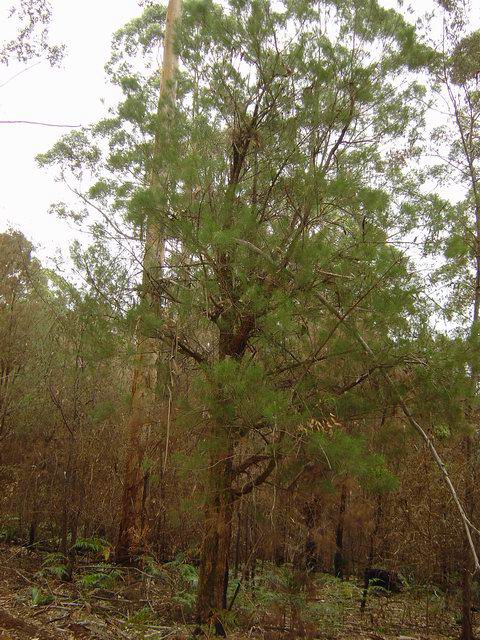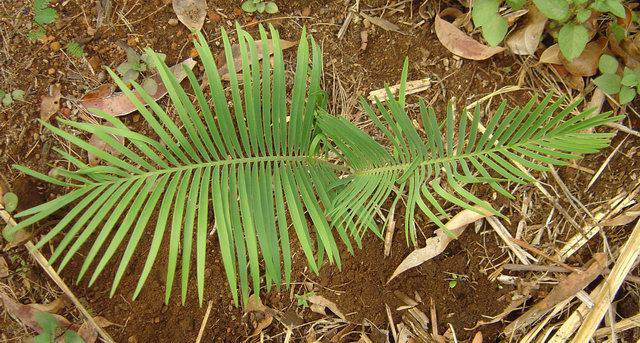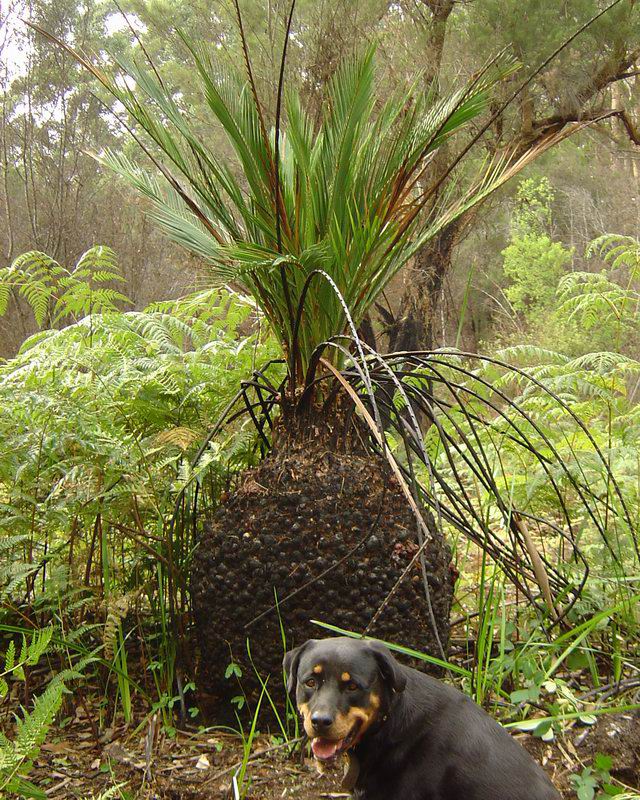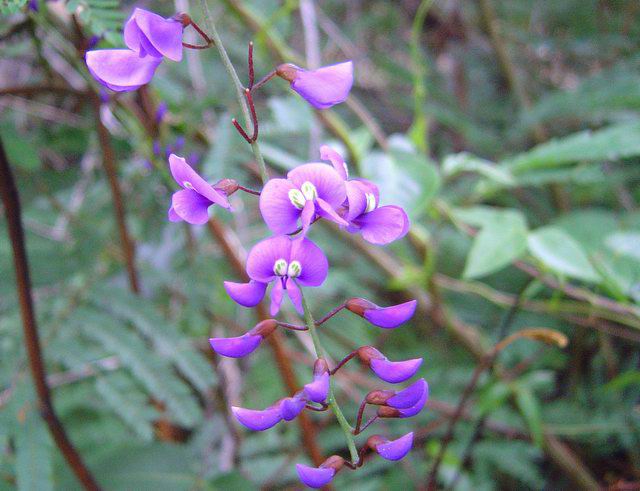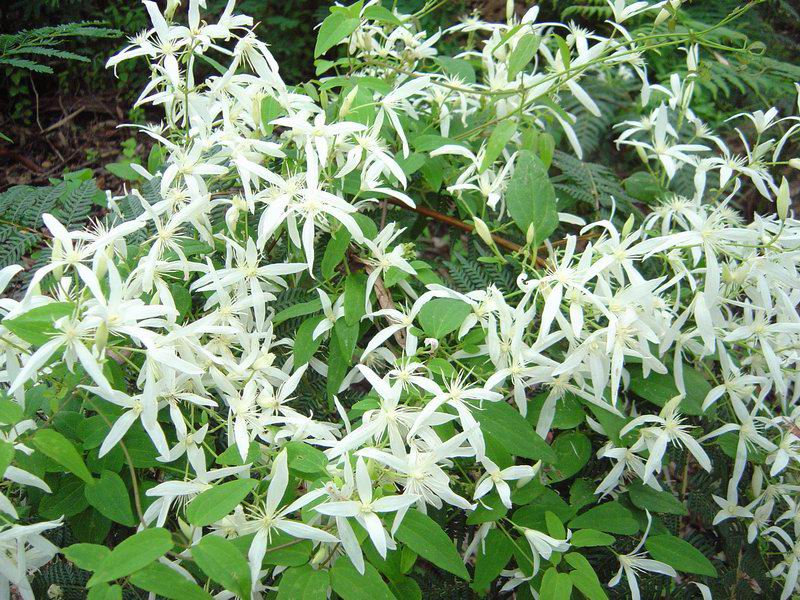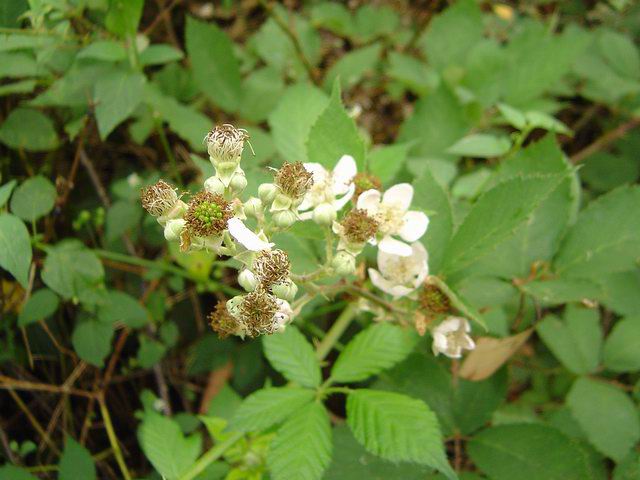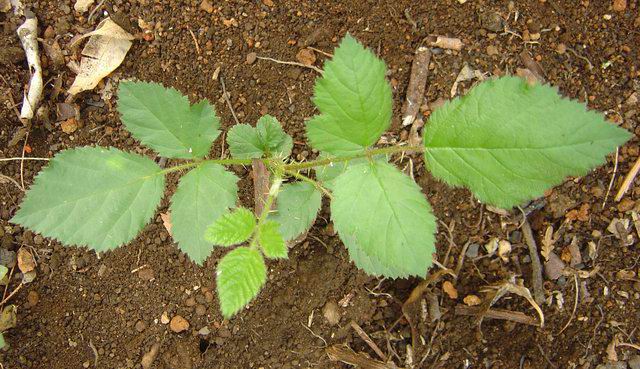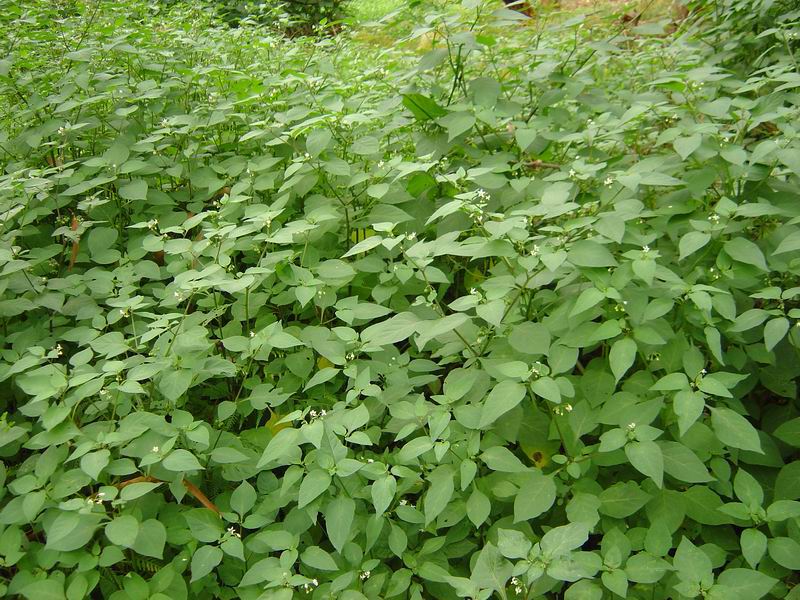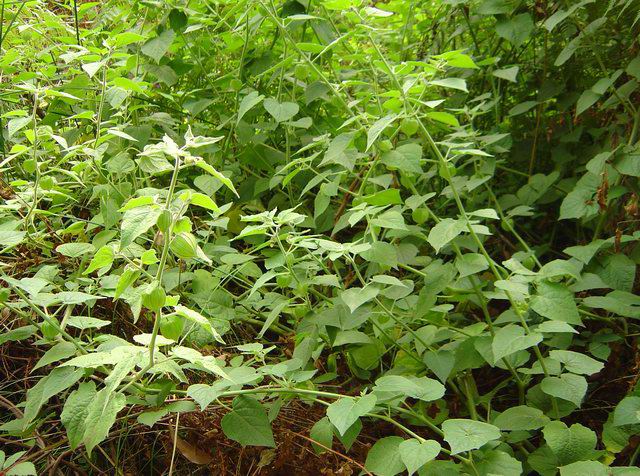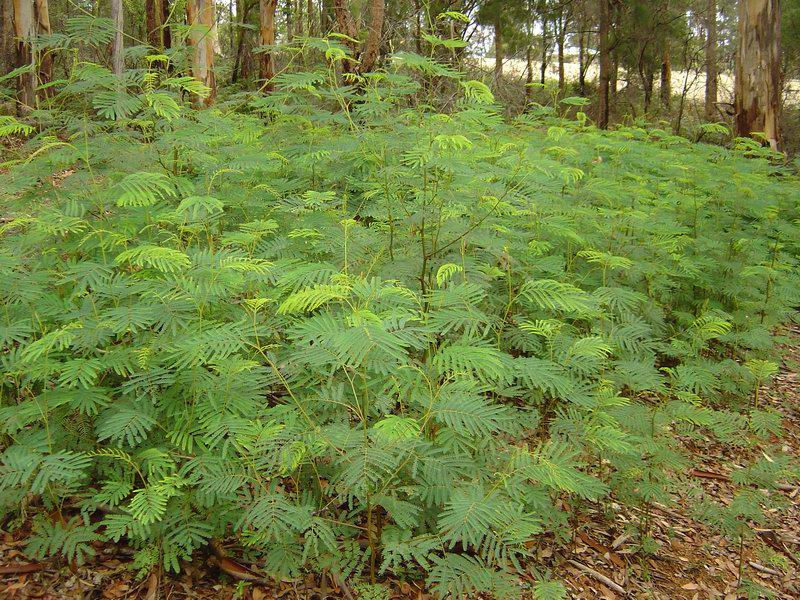One of the reasons anyone goes bush is to get back to nature. The Pemberton house is in a forest so there is plenty of nature all around to discover.
I learned a lot in the first ten years about the native plants, about the invasive weeds, what happens when land is cleared, what happens when a fire goes through. It's interesting stuff, in case you are ever in the area, here is some notes I've taken about the flora that I have come across.
Karri (Eucalyptus Diversicolour)
There is a large stand of Karri forest surrounding the house, maybe 30 acres before it becomes predominately Marri forest. Karri thrives in a certain type of soil, commonly called "Karri loam". It occurs in patches all throughout the region. The Karri forest is a sight to behold - the 3rd tallest tree in the world towering over the smaller trees that don't mind the conditions with smaller bushes and ground covers on the forest floor. It isn't a rainforest, but at the ground level it tends to be cool and moist. It is the Karri forest that attracted us to the area.
Like all plants Karri starts its life off as a tiny seed sprouting into a sapling and then races to the sky. It is considered a fast grower - it reaches its maximum height in around 75 years and fills out from there. My piece of Karri forest is actually regrown from clear-felled, in the 1930's I'm told. It was then selectively felled (ie loggers pick out the best trees and cut them out, leaving behind the rest) in the 1980's. So what I've got is not quite a "typical" forest, but most of the trees are at their full height and filling out. The ground must not quite be optimum because the tallest tree on my block is around 50m high, Karri will reach 80m and more in the right conditions.
I once asked a wisened old local what a "typical" Karri forest should look like. The answer is that there isn't one. If you go right back before people were in the area you have a certain type of forest, young trees, old trees, trees fallen on the forest floor. Anywhere there is enough light coming middle-sized trees find their way and the ground is mostly covered in forest litter from the Karri.
If you were to then consider when the Aboriginals were in the area; they tended to set the forest on fire a lot because they knew when the forest burns grasses will grow and the kangaroos would thrive - meaning plenty of tucker for them. So an Aboriginal maintained Karri Forest would have a lot less trees but really big ones, and only grassy sort of ground coverings. Anything middle sized would die during the typically hot summer fires that would roar through the area.
Then there is the logged regrowth type forest - when a forest is clearfelled for the timber, suddenly there is a lot of light hitting the ground. Baby Karri feel the sun a spring forth everywhere. Because there is so much light available there will be far more Karri racing for the sky in competition with his brothers, meaning the forest is chock-a-block with tall skinny Karri all pretty much exactly the same age. This is how my forest looks.

The "Grandpappy" seed tree of the block. For a
long time it did not have any competition
and grew into a "paddock tree".
I do have an old Karri on the block, perhaps 150 years old or more. It is a "seed tree"; during the clearing operation in the 1930's every few acres or so they'd leave one tree standing. It would rain down seeds over time in the cleared area so that the forest would fill back up again with Karris. Good thinking. It isn't very tall and it has spread out many branches; all because it was getting light in every direction it grew. Additionally fire has been getting into the base over the years, not enough to cause it to fall over but enough to hollow it out. It certainly adds a bit of interest to the block!
In a reasonably dense Karri forest the trees drop off lower limbs as they grow upwards, it is only the topmost of the tree that can find the light so that is the only place to bother growing leaves. Karri get the name "Widow-maker" from the fact that it will drop a limb weighing maybe a hundred kilos from 50m up and if you were standing underneath you're in trouble. Aparently when you see a bough dry up it will crack off and sail its way to the floor within 3 years. I can remember walking around the block and finding these strange dead baby Karri trees all over the place. However I pulled one out once and it wasn't a Karri tree - it was a Karri bough that had hit the ground with enough force to dig in 20cm and stay standing up!
If the Karri starts to drop green branches then the tree is distressed and you should be concerned. Since I built my house right in the thick of the Karri, there is a chance a tree will fall and flatten the house. Fortunately the local tree surgeon gave all my trees near the house a clean bill of health so for one to fall will be unlucky. There is a risk, but hey, for a tree that lives 300-400 years, and that these ones are only 50-80 years old, young and healthy, I'm prepared to take that risk.
Karri Wattle
This is quite often found as the understory of a Karri forest. Before setting my block on fire to clean up 20 years of forest litter, they were everywhere, up to 10m in height and 200mm in diameter. Sadly, it doesn't like fires and every single one died afterwards except the few pictured that were on a firebreak. It is quite a nice looking tree and personally I think it makes a Karri forest. They are growing back everywhere - even though the fire may have killed them, it seems to have started them growing from seed again.
In the meantime I have 5 acres of dead, but still standing Karri Wattle that I have been slowly, by hand, pushing over and into piles and burning. Firstly because all that dead and dried wood is a fire hazard and secondly because dead trees in my forest don't look all that nice.
Karri Wattle is also know as "Soapbush"; if you pick some leaves and rub them in your hands it will form a lather. Karri Wattle has an unusual smell, a bit like a tomcat has been marking his scent. Perhaps a bit offputting, but to me it is part of the smell of a Karri forest.
Karri Oak (Acacia ?)
Another common tree in the understory of a Karri forest. It is a member of the Acacia/Casurina family and has needles rather than leaves. At first I didn't really like the fact it was around, I found it a straggly looking tree that always had dead branches it never shed, and was forever catching bark and branches out of the Karri trees above it (look at the branch this one has caught!)
After the fire though, I found a bit more respect for it. It proved to be tough, almost no tree died in the fire and it acts as a bit of a screen between the house and the neighbours/main road due to its fairly thick needles. Furthermore all the little finches and wrens make their homes in it, so with the Karri Wattle only just starting to regrow again we needed something to keep all the little birds around.
Bracken Fern
Bracken fern is a tough plant, native, but considered a weed by farmers. Livestock will eat it if they are hungry but it makes them sick and can kill them. I find Bracken an unusual plant, it grows with one big frond, getting as tall as it needs to be to find the light. I've seen them fully grown as small as 30cm and as tall as 2.5m. They pull out of the ground with a bit of force but there is no point, a new one will immediately grown back, and fast!
The only way to eliminate them for good is with poison and you will need to respray every few months as the spores sprout again. It isn't hard to get rid of them in a paddock you are planning on running with livestock.
Personally, I think they look quite nice and make a pretty understory to the Karri forest so I leave them alone. When they get in my way while slashing down they go but you can be sure a month later they are back again. Keeping them off the firebreak will require poison.
A good bush remedy for ant bites uses bracken fern. When you get nipped by a soldier ant (the huge 5cm long red and black ants common in the area) it is going to hurt a lot. However if you break off a bracken fern and squeeze out some of the white sap and rub it in, you won't feel a thing. It works, I have tried it. I figure it is because the plant is toxic it causes an anisthetic reaction by the skin at the site you rub it into. Doesn't seem to have any adverse effects so I use it for any sort of scratchy insect bite. The best spot to get sap is in the root or from brand new fronds just starting to open.
Zamia Palm
Zamia Palms seem to grow all over the Southwest of Western Australia and I wasn't really suprised to find them on the block. Another tough plant, I'm not sure if anything will kill them short of digging them up! In the fire they burnt off at the base, but regrew pretty much straight away. They put out a really hard shelled seed about 40cm long. No animals seem to eat it, I've tried cracking them open and they are really really tough. However, the shell seems to burn during a fire and the seed itself then springs into life. So, unsuprisingly, after the fire they were popping up everywhere.
I also quite like Zamia Palms athough the tips of the fronds can get pretty sharp so you need to be careful. I've left them alone except around the house, where like the Bracken Fern it was one of the few plants that didn't mind being bulldozed over.
On the block I found an unsual specimen, a Zamia palm nearly as tall as me! I thought it was quite spectacular so I tied an orange ribbon around it so the bulldozer knew not to push it over. I couldn't even guess as to how old it was, suffice to say my Dad had one growing in his backyard and in 20 years it wasn't even 1/10th the size of that.
Rush
I'm not sure what this plants name is so I called it a reed or a rush. It grows only where the water is quite close to the surface, which has made it an interesting observation of where the water is on the block. (The back acre of the block has at least one spring, a soak, and 2 sections that are ankle deep in water all year around.)
When it is growing well it gets very tall and very packed and hard to get through if the ground is thick with them. That means I have been getting rid of them in most areas, I figure a Rush should only be growing around the edge of a lake, and even then only on the far side of the lake ;)
They are really hard to slash because they are "stringy" and tend to clog up the brushcutter. They grow back happy as ever from being slashed or burned so they are yet another plant that to properly remove requires digging out or poison.
Wildflowers
Mid to late spring (October/November) out come the wildflowers. It is not quite as spectacular as the warmer wheatbelt region, but it has its own charm. The main flower show are creepers - must be to climb up and over the underscrub in search of some light. The two main varieties are this purple almost wisteria looking creeper and a redder variety. The other creeper suddenly puts on a thick layer of white flowers such that you wonder where it all came from!
On the forest floor you find the odd groundcover flowering but typically the Karri drop so much leaf, bark and twig litter that you only see groundcovers near the firebreak. This leads me to conclude that most of them are weeds, introduced as seed from wherever else the firebreak tractor has been.
Blackberry
Now it is time for me to start getting angry. Some homesick European in the past thought "gee, wouldn't it be nice if there was blackberry growing here". Many years later and blackberry is the #1 noxious weed in Australia, claiming 9 million hectares country wide of impassable land.
I hate blackberry; about 1.5 acres of my block was riddled with it. "Brambles" as it is also known as makes an impenetrable wall complete with backwards facing thorns that seem to grab and pull you in, easily piercing anything other than an asbestos space suit reducing you to a mess of bloody scratches. It makes Triffids look tame.
It shoots out and whereever it touches the ground it takes root. You pull one up by hand and a tiny fragment of root left behind triggers a new plant to grow. Birds eat the seeds and poop them out, starting a new invasion. If only that European had brought over a good fruiting variety maybe there would be a teensy tiny advantage but no, it has a scant amount of very small fruit that ripens over a window of about one week a year, miss is and the birds won't.
It burns well though, it must have a high oil content. After the fire, every last plant was burnt to the ground. About 2 weeks later every last plant has said "thanks for the pruning, now it is time to really start growing." I'm not one to give up without a fight. I'm a bit of a greenie and don't like the idea of hitting the ground with herbicide, but in this case I decided it would be for the best. Every trip I made to Pemberton I would set aside 2 hours, mix up a batch of Metsulphron Methyl ("Brush Off") and spray all the plants I could find. Common Glyphosate ("Round Up") won't kill it, but I found a healthy mix of Brush off and Round Up sure teaches it a lesson
Through persistent slashing to slow it down (with the brushcutter) and poisoning with my special brew (backpack pump-up sprayer) I have got the blackberry down to just one main 1/4 acre infestation and a few smaller outbreaks. My aim is zero blackberry on the block; once I have achieved that I might have to start on the neighbours blocks too. Did I mention I hate blackberry?
Deadly Nightshade
While I'm still grumpy about weeds, here is another pest. This one won't slice you up but as it's name suggests it is pretty poisonous. If kiddies eat the little black berries on it it can make them very sick. In fact the whole plant is poisonous so if you are ripping it out by hand make sure you wash up before eating your lunchtime sandwich!
This weed was also inspired by the fire and took off immediately, beating everything else - including the blackberry. It is an annual, so once it had grown and put out its berries it died and all but dissapeared! I know however that 2.7 billion seeds are in the ground again waiting for the next germination cycle.
It is another weed that is pretty immune to most poisons, but if you hit them young with roundup you'll get them. Any bigger and you'll need to pull them up by hand. I found slashing is useful because they won't try very hard to shoot again, being an annual and all. However within 2-3 weeks of germinating they are already growing berries, even though they might be only 10cm tall. If you want to eliminate them for good you'll have to get them really young or they'll be putting seeds straight back on the ground before you can say "hey looks like the deadly nightshade is back".
Cape Gooseberry
Now most people will be familiar with these - you know, they grow the little lanterns with a small tomato-like fruit in the middle? Weed, weed, weed. I forgive this weed though, because it doesn't have sharp thorns, it isn't poisonous and in fact you can eat the berries if you wish.
It does, however, grow fast and big. Since the lower part of my block has a lot of water close to the surface it grows even better. Since this weed doesn't upset me as much as the rest, I tend to only pull them up when I see them if I've got a hand free, or slash them with the brushcutter if they are in my line of sight. I don't see getting rid of these fellas as a big issue.
Thistle
I'm going to believe these guys were accidentally introduced because I'll get even angrier if any _human_ would bring these into the country on purpose.
Needles, pins, syringes; they got *nothing* on the spike of a thistle. Whereas the blackberry is quite sharp, it is typically a short thorn and will snap off when it catches on your clothes. Thistles are a long straight spike, over 50mm long when full sized, so sharp you wouldn't feel it and made out of an organic substance stronger than titanium. They will jab you through steelcaps, man.
Thistles can grow suprisingly high, I've pulled out plants over 2m tall. They get the bulby looking pink flowers on top and if you let them dry out, !poof! the seeds go sailing every which direction.
I had maybe 10 thistles on the block when I first walked it. I didn't jump on them right away, so next year there was more than a hundred. Learning my lesson, as I walk around the block if I see a thistle I stop whatever I am doing, walk to it, and rip it out of the ground. Well kick it out of the ground that is. You can't touch them even with leather gloves on. Typically I will stand on it to flatten it over, slighly up from the base. Then with my other boot I kick between where I have pinned it down and the root. They are tough and would rather be uprooted than snap at the stem. So they come out every time. I haven't seen one reshoot from any root fragments left behind; they are annuals and seem to only come from seed.
I'm treating the Thistle like smallpox. Since it was not widespread across the block by sheer persistence if I knocked out every single outbreak I find, eventually there will be none left. It isn't very common in the area so I'm hopeful it won't return once eliminated - I suspect it was carried in as seed on a tractor that had been out in the wheatbelt (a more typical climate for thistle).
Cape Wattle
I can't be too harsh on this weed because it is native to the Cape Leeuwin region not that far away, but it is still considered a weed here. Even though it looks kinda pretty (when young), it is an annoying plant. Well to be precise it is actually a tree. When I first saw it popping up on pretty much 80% of my block after the burn I wondered what it was - there was nothing on the block prior to the fire that looked anything like it.
The rate at which it grew was tremendous; I kid you not within a year it was 3m tall. They grow so incredibly close together they don't give themselves enough room to actually get anywhere. The wood is very light and very flimsy - once I had worked out I didn't want them I discovered that the brush cutter (with a metal blade on) could cut through a 50-60mm tree trunk in a single swing.
In talking to some neighbours I found out the life cycle of the cape wattle. It germinates after a fire, grows very fast and very close together into a 10m tree, and then dies in about 5-8 years. Within a year it had blocked off my view of the lake so that's when I decided it had to go.
I found if you cut them off at the base before they are a year old only around 10% of them will reshoot. If you paint the stump with roundup they definately won't regrow. I took the approach that I would clear small areas at a time and then re-clear again the ones that reshot rather than poisoning.
During the second springtime of their life they all put out seed pods. Millions and millions of seeds. Oh well, couldn't get them all in time. At least I know they won't start again until the next fire, which I am never planning on having again. In the meantime, handing the brushcutter to any blokey visitor and telling him to blow a tank of petrol cutting down as many cape wattle as he can get to, well I figure in about 5 years there will be none left ;)
